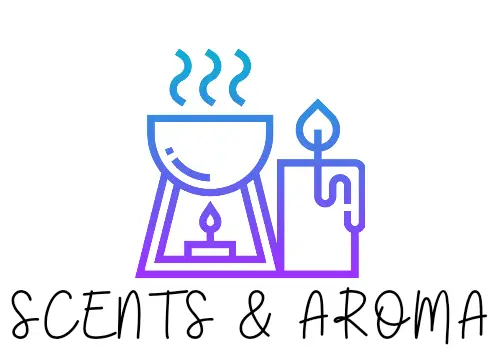Through a combination of scent and sight, lighting a candle nearly instantly changes the mood and stimulates the senses. A selection of deliciously fragrant candles is available, from apple cinnamon to crisp white linen. But if you look deeper, you’ll see that not all candles are made from the same type of wax, even if they seem identical at first glance.
Store-bought and handcrafted candles can be made from a variety of wax materials. Wax is the “fuel” for candles. Melting wax evaporates, releasing that glorious fragrance throughout your home.
While there are a number of different kinds of candle wax, including blends, the most common types are paraffin, soy, and Beeswax. Also gaining popularity is coconut wax, a relatively new product. For more information about all of the pro’s and con’s of each of the wax types have a look at this guide that I wrote.

So, which candle wax is best? While all types have pros and cons, the answer is not entirely cut and dry.
Which wax makes the most sootless candles? Nobody likes soot, which is why smokey candles aren’t particularly enticing. On top of that, paraffin, for example, can cause a range of health problems when burned. You want candles made from natural, vegetable ingredients like coconut wax, rapeseed wax, Beeswax, or soy wax that are organic and eco-friendly.
If you’re like me, looking at the ingredients in the average candle might make you pause. Is paraffin really a problem? Is soy always the best option? What about your favorite wax blends? How come some candles give me a raging headache, whereas others just smell great?
Here are a few things you should know when shopping for a clean-burning candle.
Are paraffin candles sootless?
In spite of the fact that paraffin has played an essential role in candles for decades, it’s time to move forward.
Perhaps you aren’t aware of the health hazards associated with paraffin in your home. However, if you light candles regularly, it is worthwhile to educate yourself on the dangers of paraffin wax and why you should abandon these products.
When you light a paraffin candle, dangerous chemicals are released into the air. They emit black soot and toxic fumes, which are similar in chemistry to those in diesel exhaust. They also contain dangerous chemicals such as benzene, toluene, naphthalene, trimecaine, tetradecane, pentadecane, and hexadecane. Asthma, respiratory conditions and allergic reactions are associated with these chemicals.
Popular candles such as Bath and Body Works candles contain toxic paraffin so be warned.
Are soy wax candles sootless?
While we love the flickering light and sophisticated scents emanating from our favorite scented candles, we have to wonder: how will all those wax particles, colors, and perfumes dissolved into the air affect us?
What’s the prize for a beautiful ambiance? Could soy wax candles be the answer?
Soy candles are vegetable wax candles made from hydrogenated soy, palm, and coconut oils. They burn slower and last about 50% longer than paraffin candles. Soy wax produces very little soot and is clean burning. Any spilled soy wax can be easily cleaned up since it burns relatively cool. In terms of environmental impact, soy candles are preferred over paraffin candles.
While all candles emit soot, a paraffin candle will produce more soot than a soy candle under the same conditions (wick length, air circulation, etc.). If you have a lot of airflow in the room, the soot can get on your walls, furniture, and curtains. Light a paraffin candle next to a soy candle, and you’ll notice the difference in the soot.
If you would like to know which Soy wax candles I choose to burn have a look at these they smell divine and are 100% non toxic with 100% essential oils.
And as discussed, paraffin wax emits more than just soot. When paraffin wax is burned or melted, 11 known toxins are released into the air, including two carcinogens. A carcinogen is a substance or agent that causes cancer. Soy wax does not contain these toxins and carcinogens since it is made from soybeans, which we consume. So soy wax isn’t just better for the environment, but it’s also better for you, your family, and your pets.
Just make sure to buy pure Soy wax only and not a soy wax blend as these can also contain up to 50% paraffin.
Are beeswax candles sootless?
As discussed, paraffin candles leave a black soot stain all over your house that can easily be inhaled. And inhaling these tiny particles can result in serious respiratory irritation.
On the other hand, Beeswax candles are often preferred over paraffin candles because they are natural – perfect for vegetarians and vegans since bees are not harmed in the process. As you may have guessed, beeswax candles are made from Beeswax – the natural product bees create. Are they sootless, though?
Low-quality candles will always generate more soot than high-quality ones, and Beeswax offers the best burn quality.
When burned, beeswax candles clean the air. During the burning, negative ions are released, which naturally attract positive ions found in toxins, dirt, pollen, fungi, and allergens. When the ‘bad’ positive ions bind with the negative ions emitted from the candle, a particle falls from the air. Consequently, the air is cleaned, and toxins and allergens are removed.
Which of these candles produces the least amount of soot?
Celebrations aren’t complete without a glowing candle as a table centerpiece or placed above the fireplace. The aroma of cinnamon and spice can make a room smell delicious during the festive season. However, the pleasing effects are accompanied by unseen hazards that are harmful to individuals’ health and affect the environment of the room.
Value-conscious shoppers may gravitate toward paraffin wax candles because they are the least expensive. But, the price of a candle is not always a clear indicator of its actual value.
Beeswax candles burn brighter, more prolonged, cleaner, smokeless, and more efficiently than any other candle. At first glance, beeswax candles may seem more expensive than paraffin candles, but they burn twice as long in the long run, negating any price disparity.
The best of both worlds is often achieved by blending Beeswax with other vegetable oils, such as soy. Blended candles have a higher melting point to avoid ruining the candle before it can be lit while still offering excellent scent throwing and burning properties.
The light of a beeswax candle often emits a golden halo, which is similar in color to the sun. A candle scented with honey and flowers evokes an ambiance of serenity and tranquility when lit.
- Can You Put Perfume In A Humidifier? (Read First) - September 17, 2022
- Can You Put Essential Oil In A Steam Mop? (Safety Advice) - September 17, 2022
- How To Make Lavender Oil At Home ( Candles And Diffusers) - September 9, 2022
